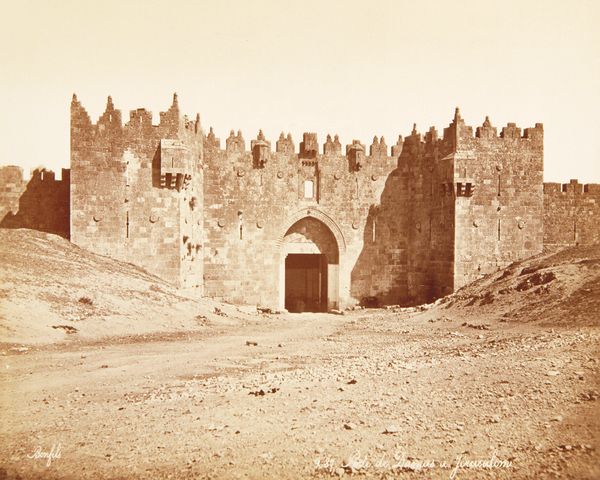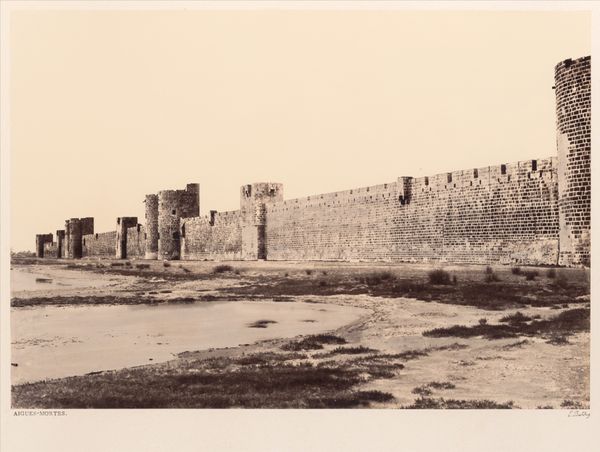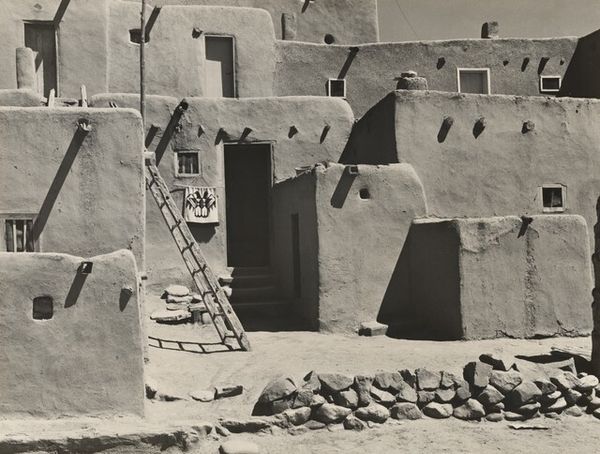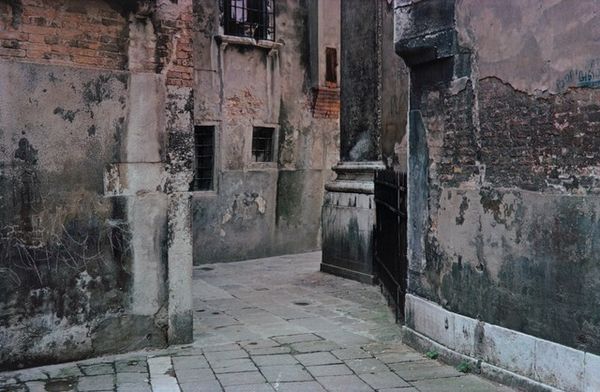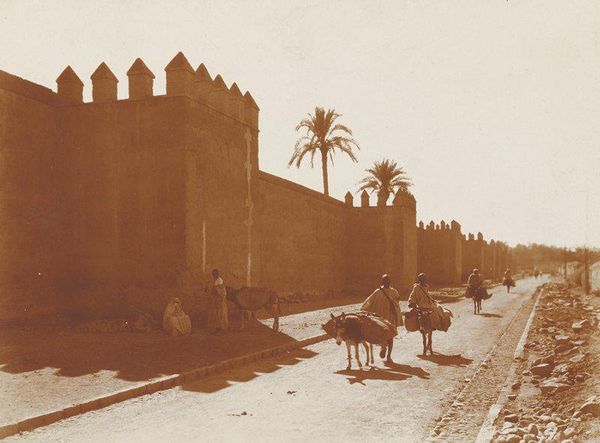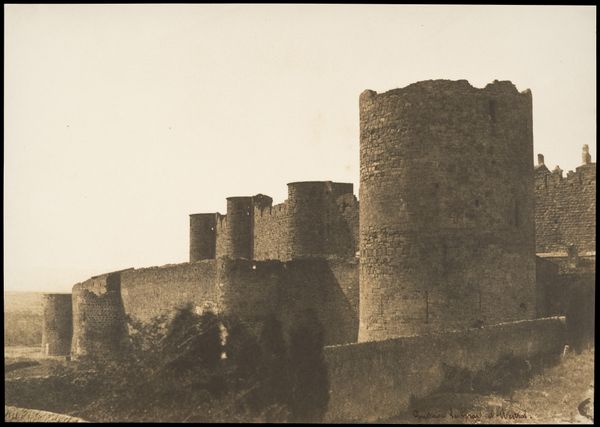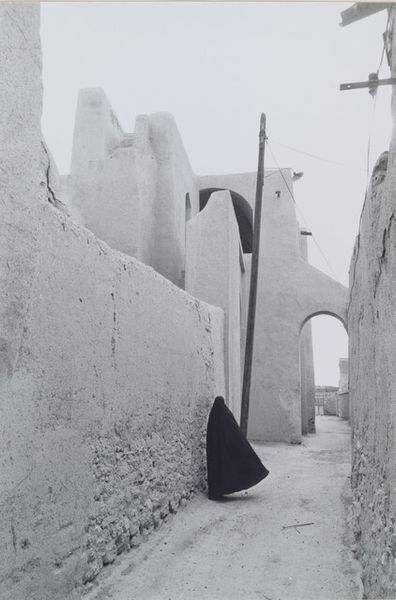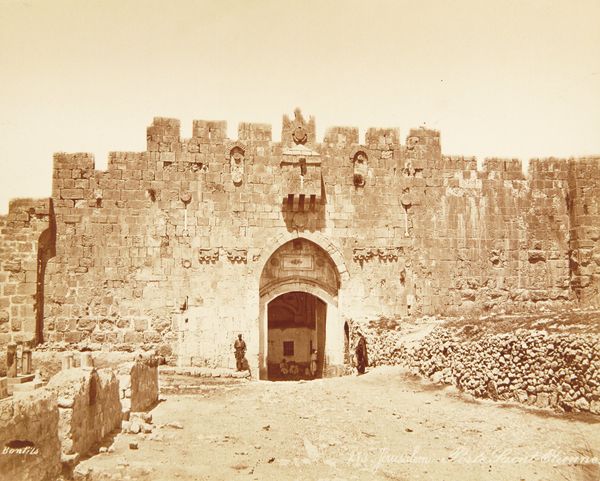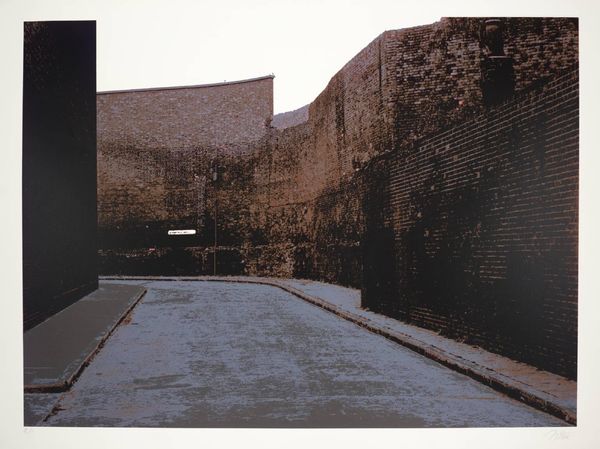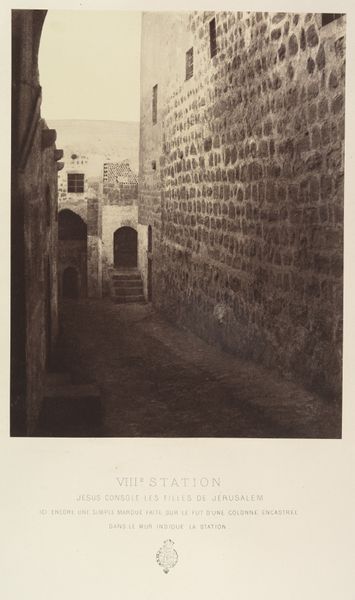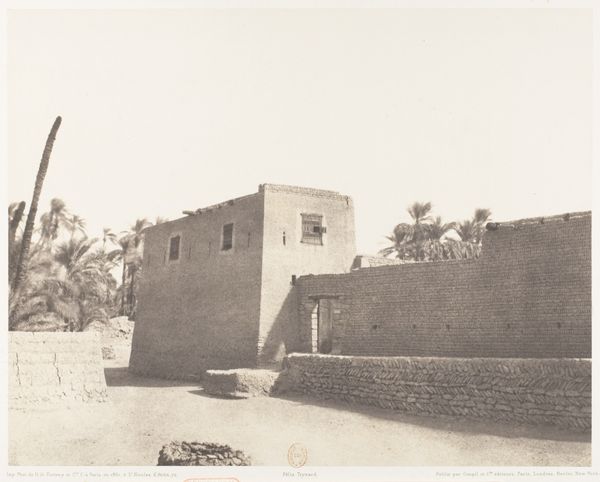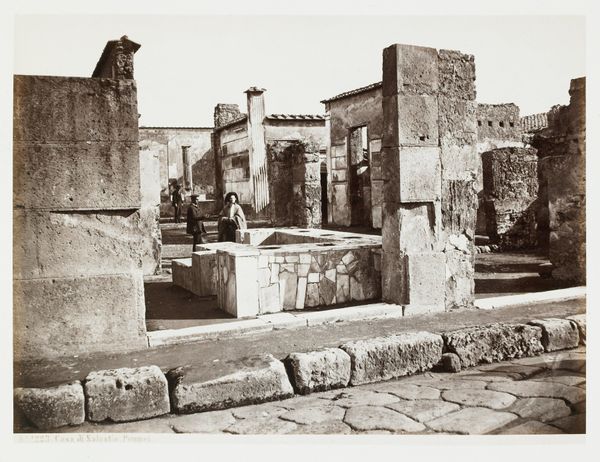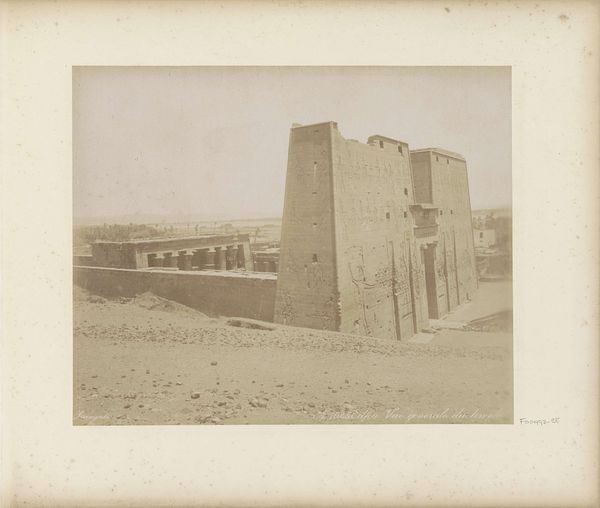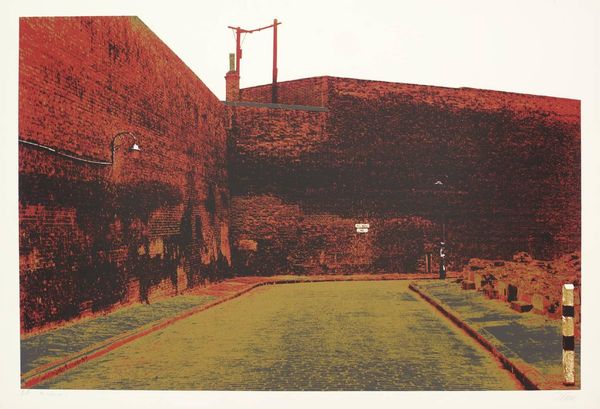
photography
#
public art
#
landscape
#
photography
#
ancient-mediterranean
#
abstraction
#
islamic-art
#
urban photography
Dimensions: overall (image): 24.3 x 36.6 cm (9 9/16 x 14 7/16 in.) sheet: 35.56 x 45.72 cm (14 x 18 in.) mat: 40.64 x 50.8 cm (16 x 20 in.)
Copyright: National Gallery of Art: CC0 1.0
Curator: Immediately striking—the dramatic interplay of light and shadow, a composition so geometric yet undeniably human. Editor: Yes, Harry Callahan’s “Morocco,” taken in 1981, really captures that contrast. Look at how the monumentality of the earthen walls is juxtaposed against the quiet lives playing out at its base. Curator: Indeed. The photograph’s success lies in its subtle formalism. The rhythmic repetition of the crenellations atop the wall, that stark division of light and shade—it all guides the eye. It is a clear example of a structural study on power and perspective through geometric forms. Editor: And the material qualities! These are not precisely hewn stones, but earthen walls. It is about what's readily at hand, the very fabric of the city that forms from the landscape itself. How do you think these building materials—mud, straw, and labor—connect back to Islamic Art principles, and ancient urban design practices more broadly? Curator: It emphasizes an essence. The barest forms constructed with light in its interaction with those raw material components. We perceive pure volume; substance expressed through simple geometry and careful orchestration of light and form. The people become but shapes that enhance our perception. Editor: But I read this image as something entirely different. The hand-made material and textures tell a very rich and different story: people depend on it. Mud walls keep residents cool in the heat, and the crenellations offer protection—form and function are intimately linked here. I see shadows on that wall formed by daily life, reflecting activity just beyond our view, giving us insight into labour, family life and trade taking place, all facilitated by this enduring architectural form. Curator: I appreciate that reading. I was so preoccupied with abstract order and pattern that I ignored those critical aspects. Editor: It is the dance between object and observer that always fascinates. Callahan gives us a canvas, but it’s the culture and material making of Morocco itself that really paints the picture.
Comments
No comments
Be the first to comment and join the conversation on the ultimate creative platform.
